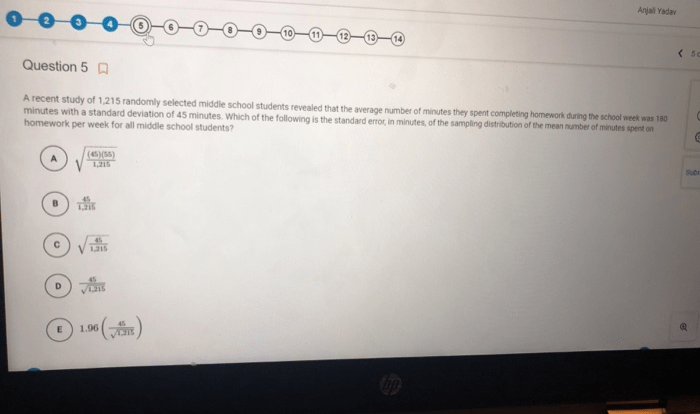Mitosis vs meiosis color by number – Dive into the captivating world of mitosis vs meiosis with our interactive color-by-number activity. This engaging experience will guide you through the intricacies of these fundamental cellular processes, unraveling their similarities and differences in a vibrant and accessible way.
As you embark on this colorful journey, you’ll witness the remarkable dance of chromosomes during mitosis and meiosis, gaining a deeper understanding of their vital roles in cell division and genetic variation.
Stages of Mitosis: Mitosis Vs Meiosis Color By Number
Mitosis is the process by which a cell divides into two identical daughter cells. It is a continuous process, but for the sake of explanation, it can be divided into four distinct stages: prophase, metaphase, anaphase, and telophase.
Prophase
Prophase is the first and longest stage of mitosis. During prophase, the chromosomes become visible and the nuclear envelope begins to break down.
Metaphase
Metaphase is the second stage of mitosis. During metaphase, the chromosomes line up in the center of the cell.
Anaphase
Anaphase is the third stage of mitosis. During anaphase, the chromosomes separate and move to opposite ends of the cell.
Telophase
Telophase is the fourth and final stage of mitosis. During telophase, two new nuclear envelopes form around the chromosomes and the cell membrane pinches in the middle, dividing the cell into two daughter cells.
Mitosis is an essential process for the growth and development of organisms. It is also necessary for the repair of damaged tissues.
Stages of Meiosis
Meiosis is a specialized cell division that produces haploid gametes (sex cells) from diploid cells. It occurs in two successive divisions, meiosis I and meiosis II, each with its own unique stages.
Meiosis differs from mitosis in several key ways, including the number of chromosome replications, the pairing and recombination of homologous chromosomes, and the number of daughter cells produced.
Meiosis I
Meiosis I consists of four stages: prophase I, metaphase I, anaphase I, and telophase I.
- Prophase I: During prophase I, the chromosomes become visible and homologous chromosomes pair up. Crossing-over occurs, where homologous chromosomes exchange genetic material, resulting in genetic recombination.
- Metaphase I: In metaphase I, the homologous chromosome pairs line up at the equator of the cell.
- Anaphase I: During anaphase I, the homologous chromosomes separate and move to opposite poles of the cell.
- Telophase I: In telophase I, the chromosomes reach the poles of the cell and cytokinesis occurs, dividing the cell into two daughter cells.
Meiosis II
Meiosis II consists of four stages: prophase II, metaphase II, anaphase II, and telophase II.
- Prophase II: During prophase II, the chromosomes become visible again and the spindle fibers form.
- Metaphase II: In metaphase II, the chromosomes line up at the equator of the cell.
- Anaphase II: During anaphase II, the sister chromatids of each chromosome separate and move to opposite poles of the cell.
- Telophase II: In telophase II, the chromosomes reach the poles of the cell and cytokinesis occurs, dividing the cell into two daughter cells.
The result of meiosis is four haploid daughter cells, each with half the number of chromosomes as the parent cell. These daughter cells can then develop into gametes, which can fuse during fertilization to form a diploid zygote.
Color-Coded Diagrams for Mitosis and Meiosis
To enhance the visual understanding of mitosis and meiosis, color-coded diagrams play a crucial role. These diagrams employ distinct colors to represent chromosomes, spindle fibers, and other cellular components, providing a clear and concise illustration of the processes involved.
The color-coding scheme used in these diagrams ensures that each component is easily identifiable, enabling students and researchers to follow the complex events of mitosis and meiosis with greater ease and accuracy. The use of colors also helps in differentiating between homologous chromosomes, sister chromatids, and spindle fibers, which are essential for understanding the genetic implications of these processes.
Chromosomes, Mitosis vs meiosis color by number
In both mitosis and meiosis, chromosomes are represented using different colors to distinguish between homologous pairs and sister chromatids. Homologous chromosomes, which are identical copies of each other and inherited from different parents, are often depicted in different shades of the same color.
Sister chromatids, which are identical copies of a single chromosome, are typically shown in the same color.
Spindle Fibers
Spindle fibers, which play a crucial role in chromosome segregation, are typically represented in a contrasting color, such as green or blue. This distinct color coding helps visualize the formation and attachment of spindle fibers to the chromosomes, ensuring accurate understanding of the mechanisms involved in chromosome movement.
Other Cellular Components
In addition to chromosomes and spindle fibers, other cellular components involved in mitosis and meiosis, such as the nuclear envelope and cell membrane, may also be represented using specific colors. This comprehensive color-coding scheme provides a holistic view of the cellular processes, facilitating a deeper understanding of the complex events involved.
Interactive Exercise
To reinforce your understanding of mitosis and meiosis, we have designed an engaging color-by-number activity. This hands-on approach allows you to learn about these cellular processes through the act of coloring.
We provide a key that assigns specific colors to different cellular components. By following this key, you can create a visual representation of mitosis and meiosis, making the concepts more concrete and memorable.
Color-by-Number Template
To participate in this activity, download the color-by-number template from the link below. The template features two sections, one for mitosis and one for meiosis. Each section includes a detailed diagram of the process, with numbered sections corresponding to the different cellular components.
Using the color key provided, assign the appropriate colors to each numbered section. As you color, you will reinforce your understanding of the sequence of events that occur during mitosis and meiosis.
Helpful Answers
What is the key difference between mitosis and meiosis?
Mitosis produces two identical daughter cells with the same number of chromosomes as the parent cell, while meiosis produces four genetically diverse daughter cells with half the number of chromosomes.
Why is mitosis essential for growth and repair?
Mitosis allows for the creation of new cells to replace old or damaged cells, enabling growth and tissue repair.
How does meiosis contribute to genetic diversity?
Meiosis shuffles and recombines chromosomes during gamete formation, resulting in offspring with unique genetic combinations.

